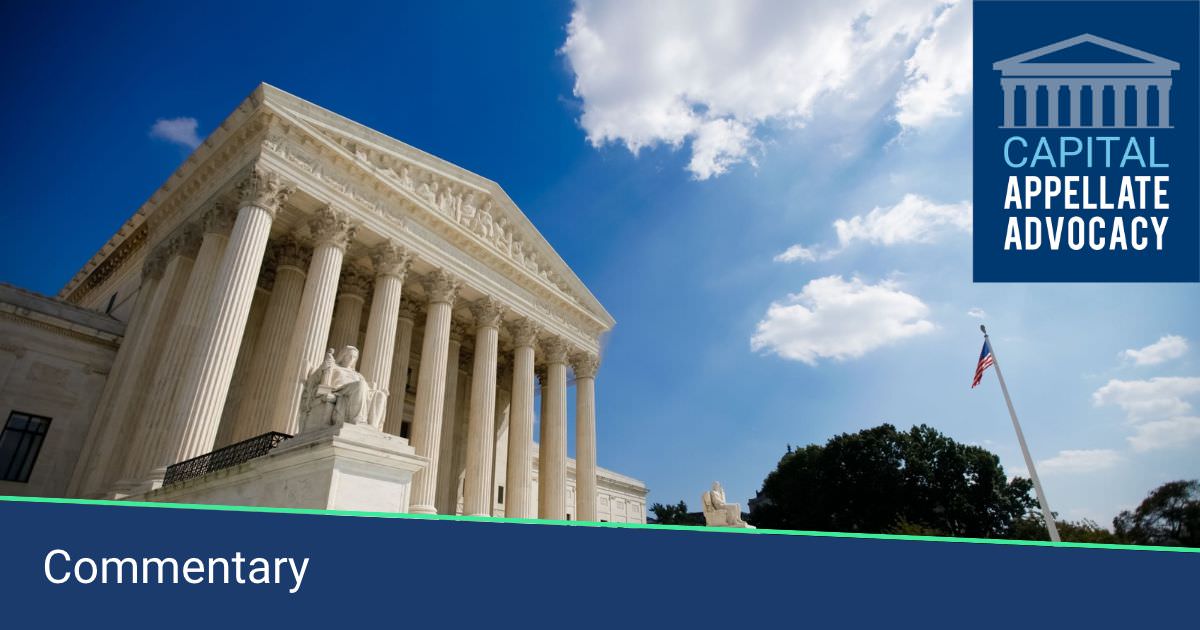Supreme Court Justice Clarence Thomas is known for his staunchly conservative views. He is not whom you might expect to cast a deciding vote that favors class-action plaintiffs. But that is exactly what he did on May 28 in Home Depot U.S.A., Inc. v. Jackson, No. 17-1471. In fact, Justice Thomas authored the Court’s 5-4 majority opinion. The case presented the question of whether “a third-party counterclaim defendant— that is, a party brought into a lawsuit through a counterclaim filed by the original defendant—[can] remove [to federal district court] the counterclaim filed against it.” Slip op. at 1.
Siding with the Court’s liberal wing, Justice Thomas, over a strong dissent authored by Justice Samuel Alito, held that the answer is no. The Court’s holding, of course, delights the class-action plaintiffs’ bar, which will do almost anything to find a way to litigate (or force settlement) of class-actions in plaintiff-friendly state courts.
So what’s up with Justice Thomas? As I explained in previous blogs (Who is Suing Who, and Why?; Supreme Court Will Review Unfair Class Action Tactic ), the principal issue in the Home Depot case was the scope of the expanded removal provision, one of the centerpieces of the Class Action Fairness Act of 2005 (CAFA), 28 U.S.C. § 1453(b). Legislative history makes it crystal clear that Congress enacted CAFA’s removal provision in order to ensure that nationwide class actions are litigated (or settled) in federal courts – not in state courts, which often are sharply tilted in favor of class-action plaintiffs and their lawyers. Interpreting the text of both § 1453(b) and the general removal provision, 28 U.S.C. §1441(a), Justice Thomas, found, however, that neither removal provision “encompasses a party brought into a lawsuit to defend against a counterclaim filed by the original defendant.” Slip op. at 3. That is what happened when a defendant in a seemingly routine state-court debt collection action targeted Home Depot with a third-party class-action counterclaim.
I believe that the key to Justice Thomas’ majority holding is found in the following passage:
” [T]he dissent argues that our interpretation allows defendants to use the statute as a ‘tactic’ to prevent removal . . . but that result is a consequence of the statute Congress wrote. Of course, if Congress shares the dissent’s disapproval of certain litigation ‘tactics,’ it certainly has the authority to amend the statute. But we do not.”
Id. at 11. In other words, if the CAFA removal provision, as written, does not achieve its intended purpose, it’s up to Congress – not the courts – to fix it. This textualist approach to statutory interpretation – an approach that respects the Constitution’s separation of powers – certainly is consistent with judicial restraint.
Justice Alito’s lengthy dissent also follows a textualist approach. Explaining that the majority’s interpretation endorses a plaintiffs’ litigation “tactic [that] subverts CAFA’s evident aims,” however, Justice Alito indicates that “a good interpreter also reads a text charitably, not lightly ascribing irrationality to its author; and I can think of no rational purpose for this limit on which defendants may remove.” Dissent at 7, 8. “There are different schools of thought about statutory interpretation, but I would have thought this much was common ground: If it is hard to imagine any purpose served by a proposed interpretation of CAFA, if that reading appears nowhere in the statutory or legislative history or our cases on CAFA, if it makes no sense as a policy matter, it had better purport to reflect the best reading of the text, or any decision embracing it is groundless.” Id. at 8.
Nonetheless, in view of the majority’s holding, Congress now has the opportunity, and indeed responsibility, to fix the text of CAFA’s removal provision so that its language unequivocally expresses its intended broad scope.

